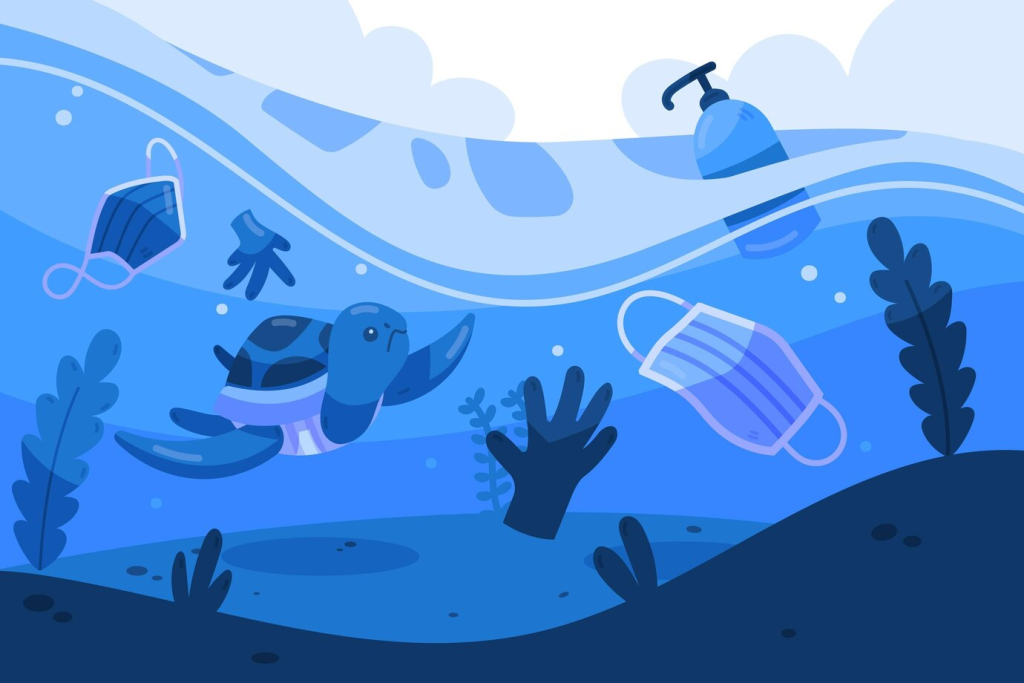Introduction
Understanding how microplastics affect marine life is critical as these tiny plastic particles, less than 5mm in size, pervade our oceans, threatening marine ecosystems. Found in everything from plankton to whales, microplastics cause physical harm, chemical toxicity, and food chain disruptions. This guide explores the key ways microplastics impact marine life and offers practical steps to mitigate their spread, helping protect our oceans starting today.

1. Ingestion Harms Marine Organisms
Marine animals, from zooplankton to fish and whales, mistakenly ingest microplastics, mistaking them for food, leading to severe health issues.
Cause Physical Damage
Microplastics can block digestive tracts, causing starvation or injury. For example, a 2019 study found 100% of UK-sourced mussels contained microplastics, impacting their feeding.
Why It Works: Their small size makes microplastics bioavailable to a wide range of species, accumulating in their tissues.
Pro Tip: Support bans on microbeads in cosmetics to reduce primary microplastic sources entering oceans.
2. Chemical Toxicity Affects Health
Microplastics act as carriers for toxic pollutants, transferring harmful chemicals to marine life upon ingestion.
Bioaccumulation in Food Chains
Microplastics adsorb toxins like PCBs, which biomagnify in predators like orcas, potentially causing reproductive issues. A single plastic particle can hold up to one million times more toxins than surrounding water.
Why It Works: Plastics’ chemical properties attract and concentrate pollutants, amplifying toxicity through the food chain.
Pro Tip: Choose seafood from less-polluted regions and advocate for stricter industrial waste regulations.
3. Disrupts Ecosystems and Habitats
Microplastics alter marine habitats and food webs, threatening biodiversity and ecosystem stability.
Damage Coral Reefs and Plankton
Microplastics harm coral reefs by causing tissue damage and bleaching, while reducing plankton’s feeding efficiency, disrupting the base of the food chain. This can hinder ocean carbon storage, affecting global ecosystems.
Why It Works: Microplastics’ persistence and spread impact critical habitats like reefs and estuarine regions.
Pro Tip: Join beach cleanups to prevent plastic debris from breaking down into microplastics.
4. Affects Reproduction and Growth
Exposure to microplastics can impair marine species’ reproduction and development, threatening population survival.
Reduce Reproductive Success
Fish exposed to microplastics show reduced reproduction, with effects persisting in unexposed offspring, suggesting long-term impacts. Lab studies also link microplastics to stunted growth in fish and zooplankton.
Why It Works: Microplastics disrupt hormonal and cellular functions, affecting growth and reproductive cycles.
Pro Tip: Reduce single-use plastics, like bottles and bags, to limit secondary microplastic formation.
5. Spreads Through the Food Chain
Microplastics move from prey to predators, impacting entire marine food webs and potentially human health.
Trophic Transfer to Apex Predators
Microplastics in zooplankton transfer to fish, then to predators like sharks, accumulating toxins. Over 114 aquatic species, including those consumed by humans, contain microplastics.
Why It Works: Trophic transfer amplifies microplastic and toxin concentrations in higher-level predators.
Pro Tip: Advocate for global treaties to reduce plastic production, like those discussed in UN negotiations.
Conclusion
Microplastics affect marine life by causing physical harm through ingestion, chemical toxicity, ecosystem disruption, reproductive issues, and food chain contamination. These pervasive particles threaten marine biodiversity and human health via seafood consumption. Start reducing their impact today by cutting single-use plastics, supporting cleanup efforts, and backing policies to limit plastic pollution, ensuring healthier oceans for future generations.
References
Fauna & Flora (2024). How does plastic pollution affect marine life? Available at: https://www.fauna-flora.org. Mongabay (2023). Microplastics pose risk to ocean plankton, climate, other key Earth systems. Available at: https://news.mongabay.com. National Geographic (2025). We Know Plastic Is Harming Marine Life. What About Us? Available at: https://www.nationalgeographic.com. Forbes (2024). How Microplastics Are Permeating Our Oceans And Marine Life. Available at: https://www.forbes.com. Scientific American (2018). From Fish to Humans, A Microplastic Invasion May Be Taking a Toll. Available at: https://www.scientificamerican.com.[](https://www.scientificamerican.com/article/from-fish-to-humans-a-microplastic-invasion-may-be-taking-a-toll/)






